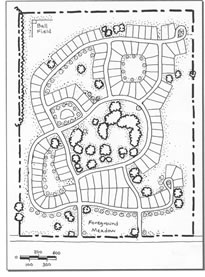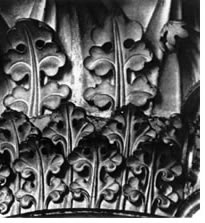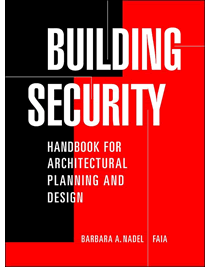

01/2005
The AIA has selected three individuals and two groups as recipients of the 2005 Institute Honors for Collaborative Achievement. The award, to be presented in May at the AIA National Convention in Las Vegas, recognizes and encourages distinguished achievements of allied professionals, clients, organizations, architect teams, knowledge communities, and others who have had a beneficial influence on or advanced the architectural profession.
The recipients of 2005 Institute Honors for Collaborative Achievement are:
 ArchVoices
ArchVoices
Through its Web site, conferences, surveys, e-mail newsletters, and essay
competitions, think tank ArchVoices has uncovered and brought to light
significant issues about the profession. The think
tank says that its weekly e-mail newsletter subscription list has grown
to 15,000 since it was formed in 1999. “Because the architectural
internship process serves as welcoming gateways at their best—or
frustrating roadblocks at their worst—to the profession, ArchVoices’ role
as a ‘watchdog’ is all the more important,” said
the jury. They characterized ArchVoices as “one of the most significant
movements to emerge on the architectural scene in recent years. Arch
Voices gives a new voice to those who were previously ‘voiceless’ in
the profession: architectural interns.”

 Randall Arendt
Randall Arendt
“Through more than 30 years of work as an author, educator, and site
designer, Randall Arendt has combined rare sensitivities in land conservation,
land planning, and site design to pioneer and advance smart growth practices
in small towns and rural communities nationwide,” wrote Richard Rothman,
FAIA, in his nomination letter. “His knowledge of the land, the logic
of his approach to design and public policy, and the excellence of his
communications skills have exerted a major influence on the way architects
and others analyze, regulate, and design communities in harmony with nature.
Arendt, who has conducted more than 1,000 workshops and conference presentations,
is the author of Rural by Design, one
of the American Planning Associations top 10 bestsellers in the last 25
years. “Randall Arendt’s
work shows his true enthusiasm for the built environment and ensures that
the built environment is designed in a way that saves its integrity for
generations,” said the jury. “His work is impressive not only
because he creates such designs, but that he generously shares his knowledge
with students, other professionals, and the community-at-large.”

 John
James
John
James
John James’ monumental and historic investigation into the development
and construction of Gothic architecture is evidenced by his prolific
writing of books on the Chartres Cathedral. An Australian architect and
educator, he made a three-year survey of over 3,500 churches in the Paris
basin in 1969–1971, which formed the foundation for all his later
research. His books include Master Masons
of Chartres,
Template Makers of the Paris Basin, The
Contractors of Chartres, and
Creation of Gothic Architecture, which
is two volumes with seven more planned. “John James’ investigations,
drawings, writings, and photographs contribute immeasurably to the understanding
and comprehension of the design and construction of the most creative
period of Medieval architecture—1100–1250,” declared
the jury. “No
one has given such persistence, obsession, and knowledge to this field
of investigation since Violet-le-Duc.”

 Barbara
A. Nadel, FAIA
Barbara
A. Nadel, FAIA
New York architect Barbara Nadel’s comprehensive and collaborative
efforts in writing Building Security—A
Handbook for Architectural Planning and Design (McGraw-Hill, 2004)
was deemed a “must read
for the profession,” by the jury. Since the terrorist attacks of
September 11, 2001, security in facilities and the built environment
have been brought to the forefront of design of the built environment
in today’s society. “Barbara realized the necessity of developing
a single body of work on security to provide building owners, design
professionals, and public officials with a user-friendly guide for improving
security for their facilities,” explains nominator Terrance J.
Brown, FAIA, who served as AIA national vice president with Nadel in
2001. “Barbara A. Nadel’s collaborative efforts in bringing
together the expertise of more than 50 architects, engineers, planners,
and allied professionals is remarkable in and of itself,” said
the jury. “It
is a timely response to the AIA’s goal of ‘improving the
quality of the built environment;’ its relevance is obvious.”
 Schoolyards to Skylines
Schoolyards to Skylines
The Chicago Architecture Foundation’s “Schoolyards to Skylines” curriculum
for K–8th grade, offers an easy-to-use and comprehensive tool for
educators and parents to bring the study of architecture and the built
environment into traditional studies of math, science, and art. Offering
47 lessons, the 500-page book focuses on the buildings and people of
Chicago to help children become aware of the importance of the built
environment in their lives. Research and writing for the publication,
by primary author Jennifer Masengarb and secondary author Jean Linsner,
both of the foundation, began in 2000; today, “Schoolyards to Skylines” is
used in 25 states and 6 foreign countries. “It’s the tool
many teachers, architects, and AIA chapters have been searching for to
make architecture come alive for young people. Get this tool out to the
public, to home-schoolers!” enthused
the jury. “Allow local AIA chapters to build all of it for local
programs. A huge thanks to the Chicago Architecture Foundation for making
this long-needed program available.”
Copyright 2005 The American Institute of Architects.
All rights reserved. Home Page ![]()
![]()
 |
||
2005
Institute Honors for Collaborative Achievement jury:
|
||